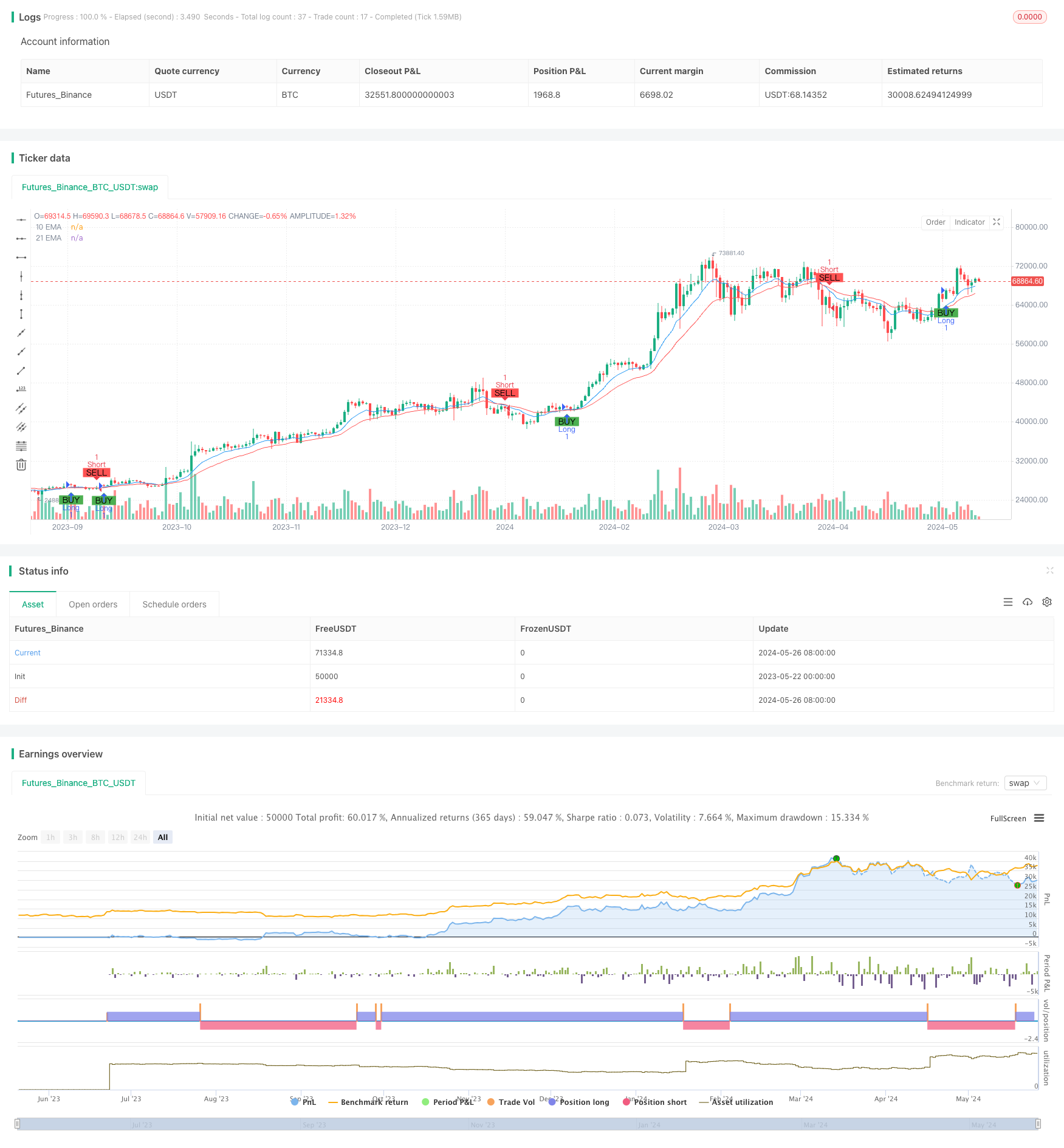
概述
该策略利用指数移动平均线(EMA)的交叉信号来捕捉价格的动量变化。通过比较短期EMA和长期EMA,当短期EMA上穿长期EMA时产生买入信号,反之则产生卖出信号。该策略引入了一个交易信号的延迟确认机制,以确保交叉信号得到确认后再执行交易,从而提高信号的可靠性。
策略原理
该策略的核心是利用不同周期的EMA来捕捉价格的动量变化。EMA是一种趋势跟踪指标,对价格的变化更加敏感。当短期EMA上穿长期EMA时,表明价格出现上升动量,产生买入信号;当短期EMA下穿长期EMA时,表明价格出现下降动量,产生卖出信号。
策略引入了一个交易信号的延迟确认机制,即将产生信号的那根K线的收盘价作为交易的触发价格,延迟到下一根K线才执行交易。这样可以确保交叉信号得到确认,提高信号的可靠性,避免出现频繁的假信号交易。
策略优势
- 简单有效:该策略逻辑简单清晰,易于理解和实现,同时能够有效捕捉价格的动量变化。
- 趋势跟踪:EMA指标具有良好的趋势跟踪能力,能够及时发现价格的转折点,使策略能够顺应趋势进行交易。
- 信号确认:通过引入交易信号的延迟确认机制,提高了信号的可靠性,减少了假信号交易的发生。
- 适应性强:该策略可以通过调整EMA的周期参数,适应不同的市场环境和交易品种。
策略风险
- 参数敏感:该策略的表现依赖于EMA的周期选择,不同的周期参数可能会导致策略表现差异较大。
- 震荡市场:在震荡市场下,频繁的交叉信号可能导致策略出现较多的交易,增加交易成本和风险。
- 趋势转折:在趋势转折点,该策略可能会出现较大的回撤,因为EMA指标存在一定的滞后性。
策略优化方向
- 参数优化:对EMA的周期参数进行优化,找到适合不同市场环境和交易品种的最优参数组合。
- 过滤机制:引入其他技术指标或过滤条件,如交易量、波动率等,以过滤掉部分低质量的交易信号。
- 止损止盈:设置合理的止损止盈规则,控制单次交易的风险敞口,提高策略的风险收益比。
- 仓位管理:根据市场波动性和账户风险承受能力,动态调整仓位大小,控制整体风险。
总结
该策略基于EMA交叉信号和延迟确认机制,以简单有效的方式捕捉价格的动量变化。策略逻辑清晰,易于实现和优化。但同时也存在参数敏感、震荡市场和趋势转折等风险。通过参数优化、信号过滤、止损止盈和仓位管理等方法,可以进一步提升策略的稳健性和盈利能力。
策略源码
/*backtest
start: 2023-05-22 00:00:00
end: 2024-05-27 00:00:00
period: 1d
basePeriod: 1h
exchanges: [{"eid":"Futures_Binance","currency":"BTC_USDT"}]
*/
// This Pine Script™ code is subject to the terms of the Mozilla Public License 2.0 at https://mozilla.org/MPL/2.0/
// © anshchaubey1373
//@version=5
strategy("EMA Crossover Strategy", overlay=true)
// Define the EMA lengths
shortEmaLength = 10
longEmaLength = 21
// Calculate the EMAs
shortEma = ta.ema(close, shortEmaLength)
longEma = ta.ema(close, longEmaLength)
// Plot the EMAs
plot(shortEma, title="10 EMA", color=color.blue)
plot(longEma, title="21 EMA", color=color.red)
// Generate buy and sell signals
longCondition = ta.crossover(shortEma, longEma)
shortCondition = ta.crossunder(shortEma, longEma)
// Delay the signal by one bar
longSignal = ta.valuewhen(longCondition, close, 1)
shortSignal = ta.valuewhen(shortCondition, close, 1)
// Plot buy and sell signals
plotshape(series=longCondition[1], location=location.belowbar, color=color.green, style=shape.labelup, text="BUY")
plotshape(series=shortCondition[1], location=location.abovebar, color=color.red, style=shape.labeldown, text="SELL")
// Strategy logic for entering positions
if (longCondition[1])
strategy.entry("Long", strategy.long)
if (shortCondition[1])
strategy.entry("Short", strategy.short)
相关推荐